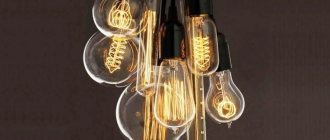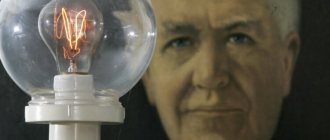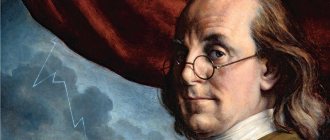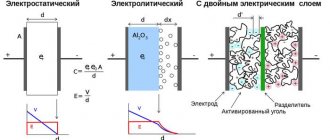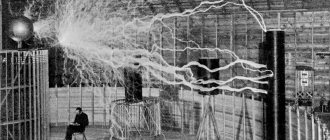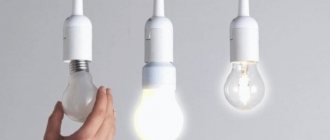The debate about who invented the incandescent lamp is still ongoing, but many scientists contributed to its creation. They tried many times to invent a durable and safe source of light, and these attempts bore first fruit with the development of electricity. It was then that the names of the two inventors who gave the world lighting devices became known - Thomas Edison and Alexander Lodygin.
Before the advent of electricity, people used the simplest sources of lighting from an ordinary torch to lamps, which were lit using vegetable oil, oil, gas, and molten wax. Animal fat was often added to the lamp for long-term burning. A fabric wick was placed in it, which was then set on fire, and such a device was somewhat reminiscent of a candle under a transparent dome.
The creation of the light bulb occurred at a time when electricity appeared in cities and then began to spread throughout rural villages.
Who was the first in the world to invent and invent the incandescent lamp?
Scientists from Russia and abroad took part in the development of lighting devices. When Alexander Lodygin began working on lighting devices, there were already people who had worked with lighting devices before him:
- In 1809, Gerard Delarue invented a light bulb with a platinum filament.
- 30 years later, its coal model was invented in Belgium by Jobard.
- In 1854, a sample of a working light bulb was presented in Germany by Heinrich Goebel. It looked like a vessel, with a bamboo thread that was charred. For five years, Goebel was developing this light bulb, but returned to the first sample.
- 6 years later, the famous English Joseph Swan received a patent for his achievements in creating an incandescent light bulb. When problems arose with creating a vacuum space, Swan continued to improve his sample until he reached a new one. In it, a filament is created from carbon fiber, placed in a rarefied atmosphere, which is why the light bulb shines brightly.
In the early 1880s, Thomas Edison and Joseph Swan created the British (since 1892 known as “General Electric”).
In Russia, lighting devices were developed by Alexander Lodygin. His light bulbs were lit by a carbon rod in a flask with air evacuated. The first working models appeared in 1872. Three years later, Didrikhson finalized Lodygin’s invention.
He replaced the light bulb with carbon fibers, increasing its lifespan. In the 90s, Lodygin went to America, using tungsten filament in his inventions. In 1906, he sold the patent to General Electric, which began producing electric lamps with a tungsten filament.
Further inventions
- Since the creation of the first electrical lighting devices, the properties of gas-discharge lamps have been constantly studied, but until the beginning of the 20th century, scientists showed little interest in them. An example is the fact that the first primitive prototypes of mercury lamps were constructed in Great Britain in the 1860s, but it was not until 1901 that Peter Hewitt invented the low-pressure mercury lamp. Five years later, high-pressure analogues went into production. And in 1911, Georges Claudi, a chemical engineer from France, showed the world a neon light bulb, which immediately became the center of attention of all advertisers.
- In the 1920s-40s. Sodium lamps, fluorescent and xenon lamps were invented. Some of them began to be mass produced even for everyday use. Today, about 2 thousand varieties of light sources are known.
- In the USSR, the colloquial name for an incandescent lamp became the phrase “Ilyich’s light bulb.” It was this idiom that became native to peasants and collective farmers during the time of universal electrification. In 1920, Vladimir Lenin visited one of the villages to launch a power plant, and that’s when the popular expression appeared. However, initially this expression was used to refer to a plan for the electrification of agriculture, towns and villages. Ilyich's light bulb was a socket, freely suspended by a wire from the ceiling and hanging down without a shade. The design of the cartridge also included a switch, and the wiring was laid openly along the walls.
- LED lamps were developed in the 60s. for industrial purposes. They had little power and could not illuminate the area properly. However, today this direction is considered the most promising.
- In 1983, compact fluorescent light bulbs appeared. Their invention was especially important in the context of the need to save energy. In addition, they do not require additional starting equipment and fit standard incandescent lamp sockets.
- Not long ago, two American companies created fluorescent lamps for consumers with the ability to purify the air and remove unpleasant odors. Their surface is coated with titanium dioxide, which, when irradiated, triggers a photocatalytic reaction.
Video of how incandescent lamps are made in old factories.
Opening stages
The invention of incandescent lamps begins with the advent of electricity in the 18th century, which prompted many scientists to engage in their own experiments in the field of electronic technology:
- In 1800, a galvanic cell was created that served as a source of current, called the “Volta Column”.
- In 1809, a light bulb with a platinum spiral was created by Gerard Delarue.
- In 1854, Heinrich Goebel invented a lamp, similar to a vacuum vessel with a bamboo thread inside. For 5 years, Gebel was developing his lamp, but he could not patent it because he was an emigrant without money. But he found a use for his invention in lighting his own watch shop.
- Another Russian inventor was P. N. Yablochkov, who invented an “electric candle” with a long service life. Its development began in Russia, and then in Paris. In 1876, an exhibition was held in London, where Yablochkov showed his invention. After this, his lamps began to be found in Paris, and then all over the world.
In order for the light bulb to shine for a long time and brightly, it was necessary to find a suitable material for the filament. At that time, scientists considered several options: tungsten and platinum were too expensive and rare, so they used coal, which was cheaper and more accessible.
We recommend watching the video:
What the first version of the lamp looked like
Frédéric de Moleyne patented a light bulb containing carbon with a platinum filament in 1841. Three years later, research into conductors failed due to the rapid melting of the platinum helix. In 1845, the scientist King replaced the platinum thread with a carbon stick, receiving a patent.
In 1854, an exhibition on electrical engineering was held in America, at which Heinrich Goebel presented his lamp. A bamboo thread was used as a conductor, and a bottle of eau de toilette was used as a body. Mercury was added to it and then poured out of the container to create a vacuum space. The disadvantage of this light bulb is its fragility and short operating time.
Thomas Edison's incandescent lamp bulb was made of glass, with the air completely evacuated, and the filament was made of a carbon rod. Having created his own company, he began producing electric lamps and other electrical system mechanisms.
Her appearance
The very first - experimental - light bulb was an elongated tube, inside of which there were platinum strips, to which current was supplied. The design did not change much later: the threads twisted in a spiral, the tube took on the shape of a pear.
For comparison: Lodygin’s lamp was made in the form of a thin coal stick, which was clamped with copper rods. All this was placed in a round glass ball.
Lodygin's lamp was unlike modern ones
Edison's lamp was a flask from which the air was pumped out. A thin coal rod was burning. However, the inventor did not stop at one light bulb: thanks to his improvements (the invention of a screw base, socket, fuses, switches, etc.), the operating time of the lamps increased.
Design features
The designs of modern lamps differ in various respects:
- Flask shape.
- The structure of the base.
- Filler gas.
- The presence of a fuse inside the structure.
- The material of the filament body.
- Features depending on the purpose.
Manufacturers offer a variety of lamp bulb designs to choose from. Some varieties are shown in the figure. The consumer selects the appropriate shape based on the permissible power and size of the luminaires. To create directionality of the light flow, the inside of the bulb is coated with a layer of aluminum.
There are lamps with and without a base.
The classic threaded connection was first proposed by Soun, and Edison creatively developed the idea - hence the letter marking of the screw base E, after the first letter of the inventor's last name.
Some models of socles are shown in the figure:
In countries with different voltage levels in electrical networks, lamps are sold with sockets that prevent screwing into sockets designed for other voltages. For example, in the USA, where the voltage level is 110–127 V, it will not be possible to screw in a light bulb for Europe (220–240V).
The luminosity and durability of the lamp depend on the composition of the gas with which the flask is filled. For example, halogen gas helps to heat the filament to high temperatures, while maintaining service life. Thanks to the effect, halogen lamps appeared; with the same luminosity, they are smaller in size and energy consumption compared to vacuum models.
Today, lamps with bulb filling are common:
- Vacuum.
- Argon or nitrogen-argon.
- Xenon.
- Kryptonian.
The fuse protects the flask from explosion when the spiral burns out. When the filament breaks, hot drops of tungsten fall on the walls of the flask, it is burned, and an explosion occurs with scattering of fragments. The fuse is a part of the supply conductor located in atmospheric air inside the base. A spark that occurs in a vacuum is quickly extinguished. Black “smoke” may appear in the lamp, but the bulb remains intact.
Large-scale appearance of lamps on the market
Light bulbs appeared on the market due to their low cost and ease of use, compared to lamps that need to be lit with gas or gasoline.
The gradual evolution of incandescent lamps occurred due to their improvement for widespread use in various fields of activity:
- backlights for buttons and switches in radio equipment;
- car lights;
- used in laser printers.
Thomas Edison was also involved in bringing light bulbs to the market. He sold them for a low price, just over one dollar apiece.
Edison wanted to make lamps more affordable than other light sources. Therefore, the rapid production of lamps and their successful sale led to a reduction in the cost of light bulbs - only 22 cents.
Characteristics, advantages and disadvantages
In the 21st century, many are gradually switching to energy-saving and LED lamps, but incandescent lamps also have their advantages:
- Instant combustion and no interruptions in operation;
- They can operate on both direct and alternating current;
- Wide range: you can choose a light bulb with a suitable temperature, voltage, brightness;
- Small sizes;
- Environmental friendliness;
- Low price.
Disadvantages of the devices include:
- Low efficiency;
- Fragility;
- Low service life;
- Fire hazard.
Despite their shortcomings, incandescent lamps were extremely popular for several decades and quickly replaced conventional lighting sources.
